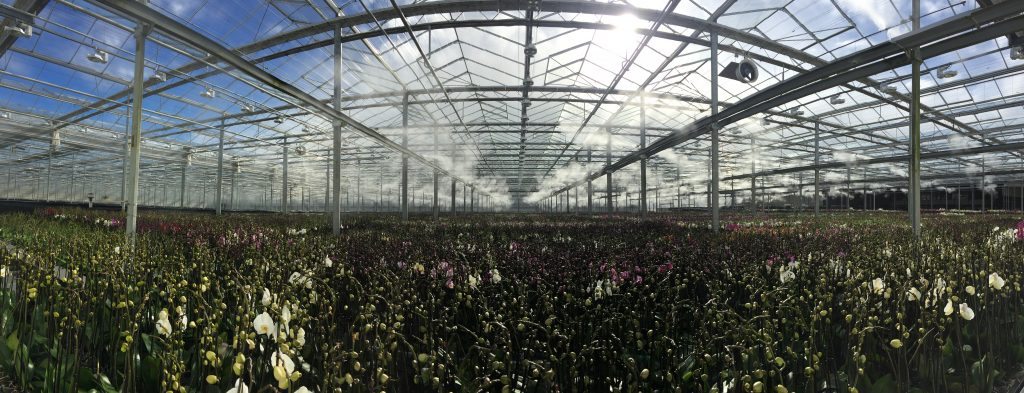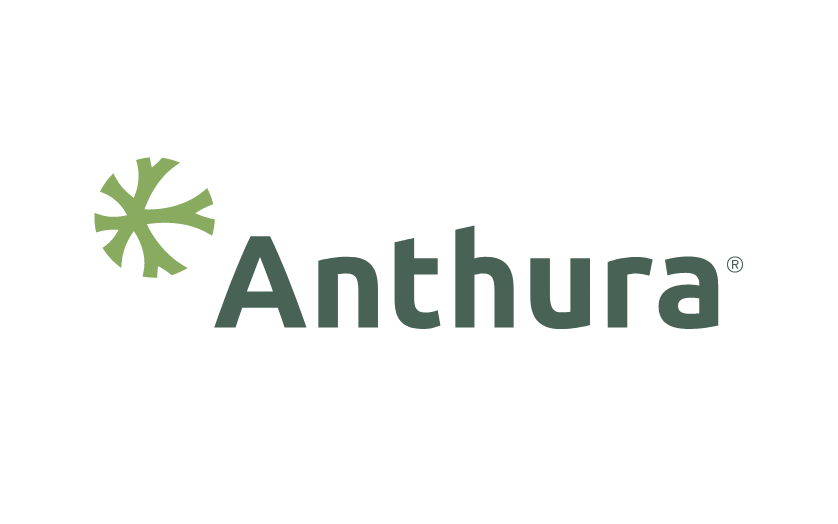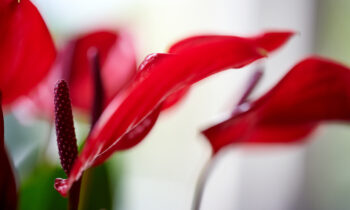Each company deals differently with humidity. This is because the greenhouses are different and the matter is approached in a different way. In addition to the advantage of higher humidity for the photosynthesis process, more advantages can be mentioned that apply specifically to Phalaenopsis.

High pressure fog installation
The cultivation benefits from good water management of the pot. The humidity of the air has a major impact on this. When the humidity is too low, the top layer will dry out considerably, which will result in an excessively dry microclimate (i.e. the climate at plant level) for the plant. This also has an impact at night. The secondary roots will not grow any longer in the pot, but rather horizontally, and also the stomata will be closed more because the climate around the plant is too dry. When this situation lasts too long, the dry top layer of the substrate can become irreversible. This means that it is impossible to humidify this layer. High humidity ensures good moisture management around the plant, which turns out to be beneficial for plant growth.
However, high humidity is not only good for the development and growth of the plants. Fungi and bacteria will also feel at home in these conditions. This leads us to the disadvantages of high humidity and the search for the optimal balance between excessively high and excessively low humidity.
Maintaining a higher humidity also requires the right conditions and maintaining an ‘active climate’ is important here. Only when you are sure that at a higher humidity the evaporation and the removal of moisture are not compromised will this have the great advantage in the cultivation in terms of better growth and development.
In practice
In the cultivation of Phalaenopsis, an average relative humidity of approximately 65%-70% is sought. At a temperature of ±28.0ᵒC, this implies a MD of ±8.0. When there is more irradiation from outside, for example, which enables the temperature to increase even more, we refer to a very active climate. More ventilation will be required and there will be a lot of air flow. In this case, it is fine to pursue a higher RH of, for instance, 75%-78%. Because of the humidification, the temperature will drop slightly, so ventilation will not be so necessary. In the event of a lack of radiation, the pipe heating (both the under-bench pipes and the upper network) takes over the function of the sun. The RH setting will fall back to the original level of 65%-70%. The following could be an example of a setting:
RV 65% +10% in een traject van 300-700 W/m²

Moisture and irrigation strategy
When Phalaenopsis has just been watered, the humidity at plant level is never too low. In order to allow the crop to dry more rapidly, a lower RH is pursued on irrigation days. Towards the next irrigation session the target value will be increased slowly in order to compensate for the decreasing microclimate. For example, on the day of irrigation, pursue a 5% lower RH and the day before irrigation a RH of +5% compared to the average RH setting. Humidifying often causes distress in the climate.
It is clear that good humidity is of great importance for the plant. If you have any additional questions or if you want to receive more information on this or another cultivation-related subject, please contact Bureau IMAC Bleiswijk BV. Click here for more information about humidity in the cultivation.
This article is part of the Anthurinfo, edition 2 – 2017. Click here click here for the complete edition.





